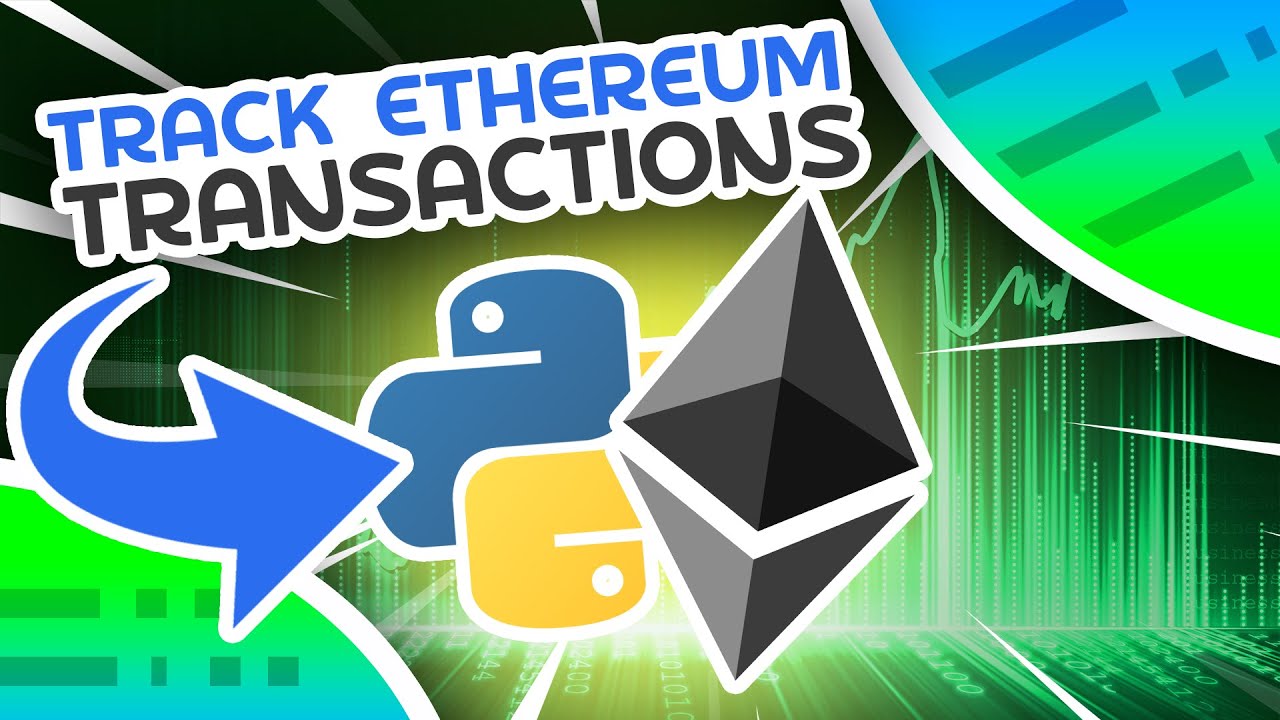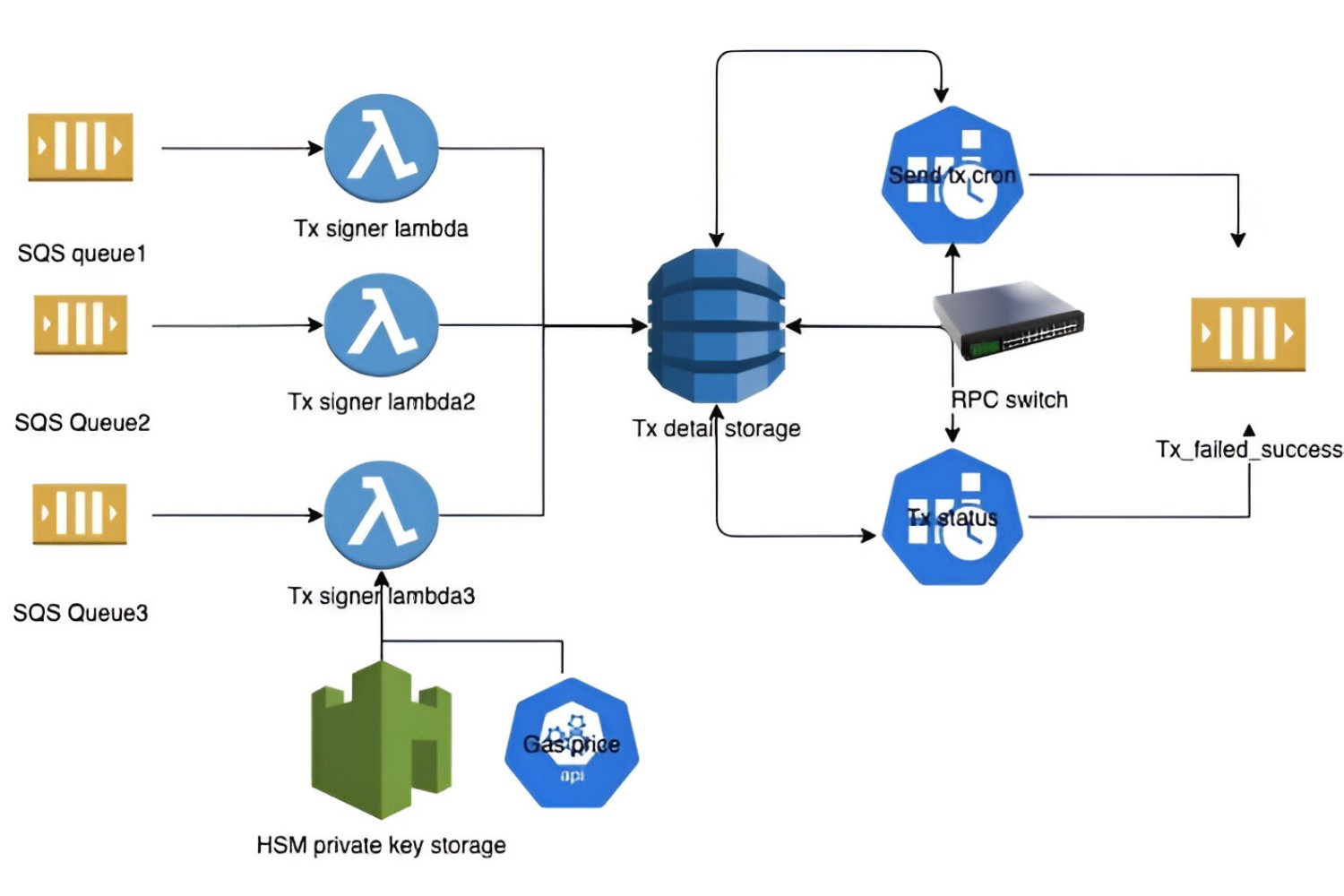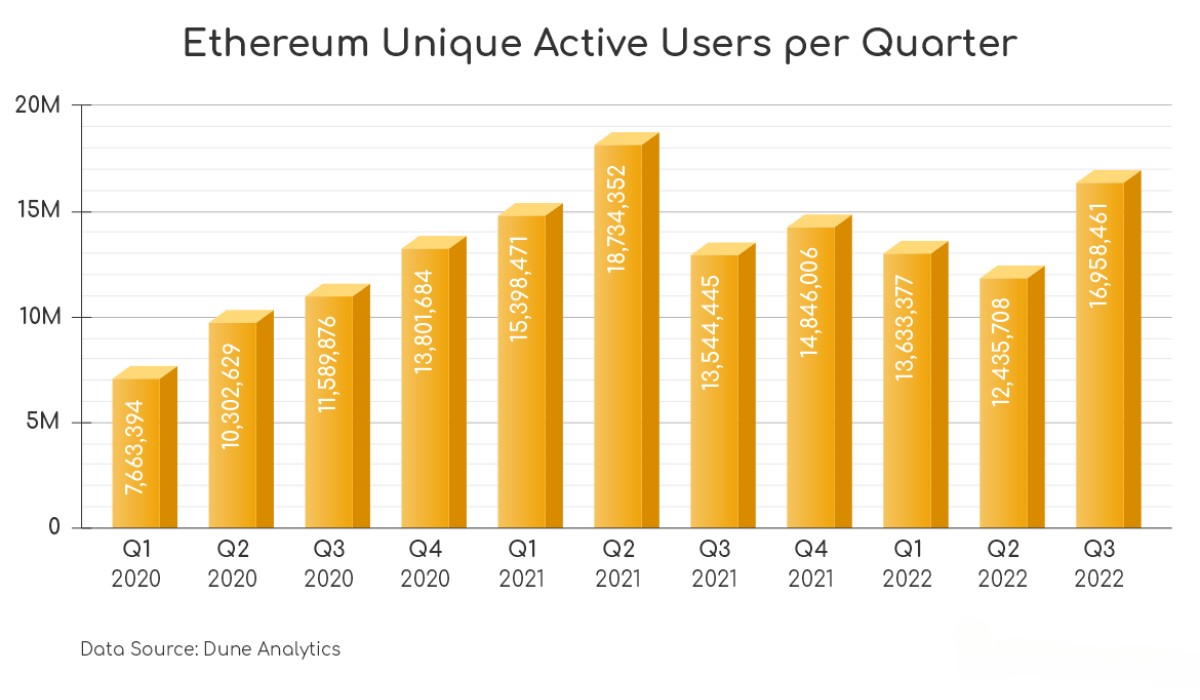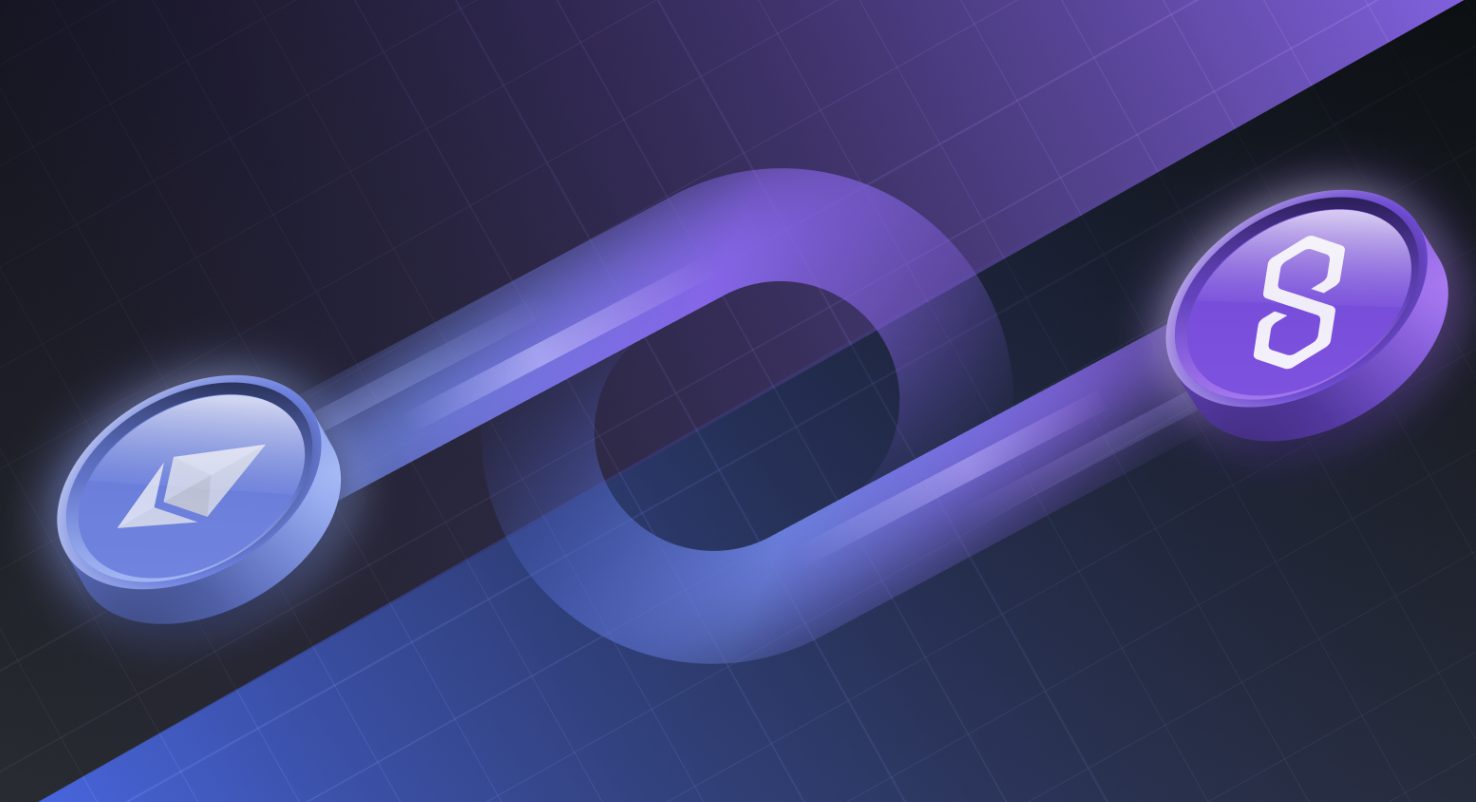Introduction
Welcome to this guide on how to track Ethereum transactions. Ethereum is a popular blockchain platform that allows users to transfer and receive Ether, the cryptocurrency associated with the network. Tracking transactions is essential for various reasons, such as verifying the status of a payment, monitoring the movement of funds, or conducting research.
In this article, we will explore several methods that you can use to track Ethereum transactions. Whether you’re a developer integrating Ethereum into your application or a user monitoring your own transactions, these methods will provide you with the necessary tools and knowledge to keep track of your Ethereum transfers.
Before we dive into the methods, it’s important to note that tracking Ethereum transactions requires some basic understanding of the Ethereum ecosystem. You should have a general understanding of the blockchain and how transactions function within it. Familiarity with web development concepts, such as HTML, JavaScript, and APIs, will also be beneficial for some of the methods discussed.
In the following sections, we will cover five different approaches to track Ethereum transactions. Each method offers different features and benefits depending on your requirements and technical expertise. These methods include using blockchain explorers, utilizing APIs like Etherscan and Infura, harnessing the power of the Web3.js library, and leveraging the functionalities provided by the Truffle Suite.
By the end of this guide, you will have a comprehensive understanding of the various methods available to track Ethereum transactions. You’ll be equipped with the necessary knowledge and tools to monitor the flow of Ether on the blockchain effectively.
So, whether you’re a blockchain enthusiast, a developer building decentralized applications, or simply interested in keeping track of your own Ethereum transactions, let’s dive into the world of Ethereum transaction tracking and explore the different methods at your disposal.
Prerequisites
Before you start tracking Ethereum transactions, there are a few prerequisites you should fulfill to ensure a smooth and successful tracking process. These prerequisites include:
1. Basic Understanding of Ethereum: It is important to have a basic understanding of Ethereum and how it works. Familiarize yourself with concepts such as blocks, transactions, addresses, and smart contracts. This knowledge will provide you with a foundation to effectively track Ethereum transactions.
2. Access to an Ethereum Wallet: To track Ethereum transactions, you need an Ethereum wallet to interact with the blockchain. There are various wallet options available, including hardware wallets, software wallets, and web-based wallets. Choose a wallet that suits your needs and ensure you have access to it.
3. Knowledge of HTML, CSS, and JavaScript: Some of the tracking methods discussed in this guide require basic web development skills. Understanding HTML, CSS, and JavaScript will help you interact with blockchain explorers, APIs, and libraries effectively.
4. Installed Web3.js Library: If you plan to utilize the Web3.js library to track Ethereum transactions, make sure you have it installed. Web3.js is a JavaScript library that allows you to interact with the Ethereum blockchain. Install it through npm or include it by referencing a CDN in your HTML file.
5. Access to APIs: Depending on the tracking method you choose, you may need access to the APIs provided by Ethereum block explorers like Etherscan or Infura. APIs allow you to retrieve transaction data programmatically. Ensure you have registered for an API key or have access to the necessary endpoints.
By meeting these prerequisites, you will have the foundational knowledge and tools required to track Ethereum transactions successfully. With these in place, you’re ready to explore the different methods discussed in the upcoming sections and become a proficient Ethereum transaction tracker.
Method 1: Using Blockchain Explorers
One of the simplest methods to track Ethereum transactions is by using blockchain explorers. Blockchain explorers are online tools that allow you to search and view data on the Ethereum blockchain. These explorers provide a user-friendly interface to navigate through transactions, blocks, and addresses.
To track Ethereum transactions using blockchain explorers, follow these steps:
1. Choose a Blockchain Explorer: There are several popular blockchain explorers available, such as Etherscan, Etherchain, and Blockchair. Choose the one that suits your preferences in terms of user interface, features, and reliability.
2. Search for the Transaction: Enter the transaction hash or the sender/receiver address into the search bar on the blockchain explorer. The explorer will then display detailed information about the transaction, including the status, block number, gas price, and any associated smart contract interactions.
3. Explore Transaction Details: Once you find the desired transaction, you can explore its details by clicking on it. The explorer will provide a breakdown of the transaction’s inputs, outputs, and gas fees. It may also show additional information, such as contract addresses involved and event logs if any.
4. Track Transaction Status: Blockchain explorers allow you to track the status of a transaction in real-time. You can see whether the transaction is pending, confirmed, or failed. This is particularly useful if you’re waiting for a payment or monitoring the progress of a transaction.
5. View Transaction History: Blockchain explorers also provide a transaction history for each Ethereum address. You can view all the transactions associated with an address, including both incoming and outgoing transfers. This feature comes in handy for tracking the flow of Ether between different wallets.
6. Subscribe to Notifications: Some blockchain explorers allow you to subscribe to notifications for specific addresses or transactions. You can receive instant alerts via email or other communication channels when there are changes or updates related to the addresses or transactions you’re interested in.
By utilizing blockchain explorers, you can gain insights into Ethereum transactions, track their statuses, and explore the details of each transfer. These explorers provide a user-friendly and convenient way to monitor and track Ethereum transactions without any programming knowledge or technical expertise.
Method 2: Using Etherscan API
If you’re a developer looking for programmatic access to Ethereum transaction data, using the Etherscan API is an excellent option. Etherscan is one of the most widely used Ethereum block explorers, and its API allows developers to retrieve transaction information, account balances, and other data directly from the Ethereum blockchain.
Here’s how you can track Ethereum transactions using the Etherscan API:
1. Obtain an API Key: To use the Etherscan API, you need to register for an API key. Visit the Etherscan website and follow their documentation to obtain your unique API key. This key will be required to authenticate your API requests.
2. Make API Requests: Once you have your API key, you can make requests to the Etherscan API endpoints. The API provides several endpoints to retrieve transaction data based on criteria such as transaction hash, address, block number, and more. Use the appropriate endpoint to fetch the desired information.
3. Parse and Process Response: The Etherscan API will return the transaction data in a structured format, such as JSON. Parse the response to extract the necessary information, such as the transaction status, block number, gas price, and sender/receiver addresses. Process this data according to your application’s requirements.
4. Track Transaction Status: With the Etherscan API, you can track the status of a transaction in real-time. By monitoring the transaction’s status field, you can determine whether it is pending, confirmed, or failed. This information is crucial for applications that require up-to-date transaction tracking.
5. Get Transaction History: The Etherscan API also allows you to fetch the transaction history for a specific Ethereum address. You can retrieve a list of transactions associated with an address, including details such as the transaction hash, block number, timestamp, and value transferred. This feature is useful for tracking the transaction history of wallets or monitoring specific accounts.
6. Handle Rate Limits and Authentication: The Etherscan API enforces rate limits to prevent abuse. Ensure that you handle these rate limits in your application to avoid hitting any restrictions. Additionally, authenticate your API requests using your API key to ensure secure access to the Etherscan API and protect your account.
By leveraging the Etherscan API, developers can programmatically access Ethereum transaction data and build robust applications that require real-time tracking, transaction history, and other transaction-related functionalities.
Method 3: Using Web3.js Library
If you’re a developer looking for a powerful and flexible way to track Ethereum transactions, utilizing the Web3.js library is a great choice. Web3.js is a JavaScript library that allows you to interact with the Ethereum blockchain and build decentralized applications (DApps).
Here’s how you can track Ethereum transactions using the Web3.js library:
1. Install Web3.js: Start by installing the Web3.js library using npm (Node Package Manager) or include it in your HTML file by referencing a CDN (Content Delivery Network). Make sure you have the latest version of Web3.js to access all the necessary features and functionalities.
2. Connect to the Ethereum Network: Use the Web3.js library to connect to the Ethereum network by specifying a provider. You can connect to the mainnet, testnets, or even run a local Ethereum node. The provider handles the communication between your application and the Ethereum network.
3. Fetch Transaction Details: With Web3.js, you can retrieve transaction details by querying the Ethereum blockchain. Use the `web3.eth.getTransaction()` method to fetch transaction information using the transaction hash. This method will return details such as the sender/receiver addresses, transaction data, gas price, and more.
4. Subscribe to Transaction Events: Web3.js allows you to subscribe to events related to Ethereum transactions. You can use the `web3.eth.subscribe()` method to listen to new incoming transactions or pending transactions. Whenever an event is triggered, you can update your application and track the progress of transactions in real-time.
5. Check Transaction Status: Use the `web3.eth.getTransactionReceipt()` method to check the status and confirmation of a transaction. This method returns the transaction receipt, which includes information such as the block number, cumulative gas used, and status indicator. By analyzing the receipt, you can determine whether the transaction was successful or not.
6. Implement Error Handling and Event Management: When working with Web3.js, it’s essential to implement proper error handling and event management in your application. Handle exceptions and errors that may occur during the transaction tracking process. Additionally, utilize event management techniques to trigger actions based on specific events, such as when a transaction is confirmed or failed.
By utilizing the Web3.js library, you have the flexibility to build customized applications that can track Ethereum transactions, monitor their statuses, and respond to transaction events in real-time. The library provides a comprehensive set of tools and functionalities that empower developers to create powerful decentralized applications on the Ethereum blockchain.
Method 4: Using Infura API with Web3.js
In order to track Ethereum transactions, developers often rely on both the Infura API and the Web3.js library. Infura is a popular Ethereum API provider that offers reliable and scalable access to the Ethereum network. By combining the Infura API with Web3.js, developers can easily retrieve transaction data and monitor Ethereum transactions.
Here’s how you can track Ethereum transactions using the Infura API with Web3.js:
1. Sign up for an Infura Account: Start by signing up for an account on the Infura website. Once you have an account, create a new project and obtain your Infura project ID. This project ID will allow you to authenticate and make API requests to the Infura endpoints.
2. Set up Web3.js with Infura Provider: Configure Web3.js to connect to the Ethereum network using the Infura provider. Specify the Infura endpoint URL and your project ID when instantiating the Web3.js object. This will establish a connection between your application and the Ethereum network through the Infura gateway.
3. Fetch Transaction Details: Use Web3.js methods, such as `web3.eth.getTransaction()` or `web3.eth.getBlock()`, to fetch specific transaction details. You can retrieve information like the sender/receiver addresses, transaction status, gas price, and block number. The Infura API acts as the intermediary between your application and the Ethereum network to process these requests.
4. Monitor Transaction Status: With the Infura API, you can subscribe to events and monitor the status of Ethereum transactions in real-time. Use the Web3.js `web3.eth.subscribe()` method to listen for new block events or pending transactions. Whenever a new transaction is included in a block or becomes pending, your application can take action accordingly.
5. Handle Authentication and Rate Limits: Authenticate your API requests to the Infura API using your project ID. This ensures that only authorized requests are made on your behalf. Also, be mindful of rate limits imposed by Infura to prevent abuse or excessive API calls. Implement necessary measures to handle rate limits and optimize your application’s performance.
6. Implement Error Handling and Retry Mechanism: Error handling is crucial when utilizing the Infura API. Network disruptions or temporary server issues may occur. Implement error handling and retry mechanisms in your application to handle such scenarios gracefully. This helps ensure a smooth and uninterrupted tracking process.
By combining the Infura API with Web3.js, developers can easily access and retrieve Ethereum transaction data. This powerful combination enables them to track transaction details, monitor their statuses, and create robust applications that require real-time tracking of Ethereum transactions.
Method 5: Using Truffle Suite
For developers looking for a comprehensive solution to track Ethereum transactions and develop decentralized applications (DApps), the Truffle Suite is an excellent option. The Truffle Suite is a development environment, testing framework, and asset pipeline for Ethereum DApps. It provides a seamless experience for tracking Ethereum transactions while offering a range of additional features for smart contract development.
Here’s how you can track Ethereum transactions using the Truffle Suite:
1. Install the Truffle Suite: Start by installing the Truffle Suite on your machine. Truffle is a command-line tool that requires Node.js and npm (Node Package Manager). Use npm to install Truffle globally by running the command: npm install -g truffle.
2. Set up a Truffle Project: Create a new Truffle project by running the command: truffle init. This command generates a directory structure and configuration files for your project. Navigate to the project directory before proceeding to the next steps.
3. Write Smart Contracts: Use the Truffle Suite to write and deploy your smart contracts. Write your smart contracts in Solidity or any other compatible language and place them in the contracts directory in your Truffle project. You can utilize the Truffle Suite’s built-in support for contract compilation, migration, and deployment.
4. Develop Transaction Monitoring Scripts: With Truffle, you can develop scripts to monitor Ethereum transactions. Truffle provides a JavaScript API that allows you to interact with your smart contracts and track transaction events. Write scripts that listen for specific transaction events, update your application’s state, and track the progress of transactions.
5. Run the Truffle Development Network: Start a local development network using Truffle by running the command: truffle develop. This will create a local Ethereum network with a set of predefined accounts. Use these accounts to send transactions and test your transaction tracking scripts in a controlled environment.
6. Test and Deploy: Use Truffle’s testing framework to test your smart contracts and transaction monitoring scripts. Write test cases to ensure the stability and correctness of your code. Once you’ve thoroughly tested your code, deploy your smart contracts to a live Ethereum network, such as the mainnet or a testnet, using Truffle’s migration feature.
By utilizing the Truffle Suite, developers can not only track Ethereum transactions efficiently but also streamline the entire DApp development process. Truffle’s comprehensive toolset provides features for smart contract development, testing, deployment, and advanced transaction monitoring, making it a powerful choice for Ethereum development.
Conclusion
Tracking Ethereum transactions is essential for various purposes, whether you’re a developer integrating Ethereum into your application or a user monitoring your own transactions. In this guide, we explored five different methods to track Ethereum transactions: using blockchain explorers, utilizing the Etherscan API, leveraging the Web3.js library, utilizing the Infura API with Web3.js, and using the Truffle Suite.
Blockchain explorers provide a user-friendly interface to search and explore Ethereum transactions. They are a convenient option for non-developers or users who want a simple way to view transaction details and track transaction statuses in real-time.
The Etherscan API offers programmatic access to Ethereum transaction data. Developers can retrieve transaction information, account balances, and other data directly from the Ethereum blockchain. This method is suitable for developers who want to build applications with real-time tracking and transaction history features.
Utilizing the Web3.js library allows developers to interact with the Ethereum blockchain and track transactions in a more customizable way. By using Web3.js, developers can connect to the Ethereum network, fetch transaction details, monitor transaction events, and build powerful decentralized applications.
The Infura API with Web3.js provides a reliable and scalable solution for tracking Ethereum transactions. Developers can leverage the Infura API as a gateway to the Ethereum network and use Web3.js to interact with the blockchain, fetch transaction details, monitor statuses, and handle events.
Finally, the Truffle Suite offers a comprehensive development environment for Ethereum DApps, including transaction tracking capabilities. Developers can write, test, and deploy smart contracts, develop transaction monitoring scripts, and use Truffle’s suite of tools to streamline the entire DApp development process.
By exploring these methods, you now have a range of options to track Ethereum transactions based on your specific requirements and technical expertise. Whether you’re a non-technical user or an experienced developer, you can effectively monitor the flow of Ether on the Ethereum blockchain and gain valuable insights into transaction details and statuses.
So, dive into the world of Ethereum transaction tracking, choose the method that suits you best, and start efficiently monitoring and tracking Ethereum transactions for your applications or personal use.

























